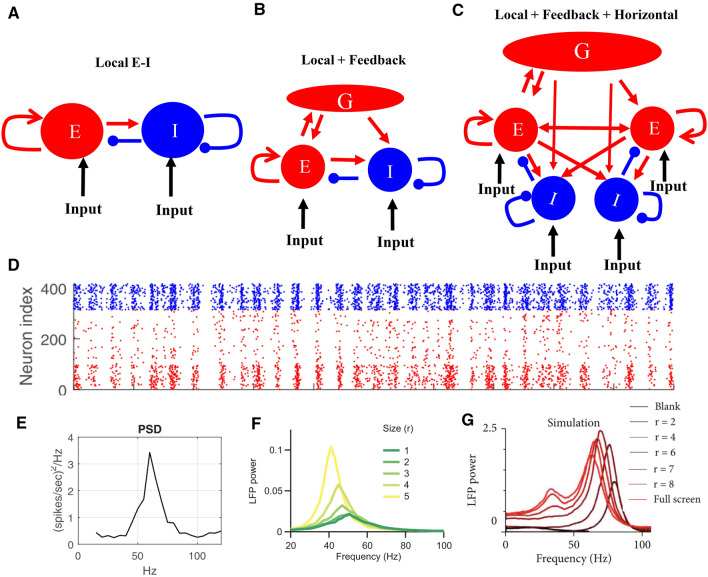Fig. 6.
Architectures and connectivity patterns of models for generating narrow-band gamma rhythms. A shows the PING model's basic framework (mutually connected pyramidal cell and interneuron). B shows a model based on the PING model in A, but it has an additional feedback component, which is driven by the E neurons and provided excitatory feedback to both E and I (Jia et al. 2013a, b). C shows a model based on the model in B, with added horizontal connections (HC) in V1 (Han et al. 2021). D (replotted based on Chariker et al. 2018) shows the raster of spikes generated in a large scale spiking neural network (in a patch of 400 E- and I- neurons in a cortical hyper-column). The spiking neuron model is also able to generate gamma band peaks with stochastic inputs, which is shown in the Power Spectral Density (PSD) plot in E. F is replotted based on Jia et al. (2013a, b). It shows the simulated power spectra of LFP for gratings of different sizes based on the model shown in B. G is replotted based on Han et al. (2021). It shows power spectra of the LFP induced by stimuli at different sizes in the model shown in C

